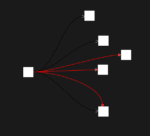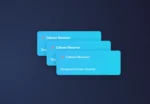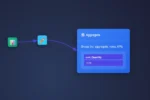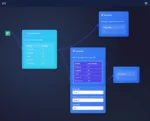
by tyler garrett | Jun 30, 2025 | Data Visual
In today’s interconnected world, data visualization is more than just graphs, charts, and dashboards—it’s a universal language that bridges barriers and communicates complex insights across diverse cultural audiences. If your visualizations aren’t culturally attuned, even the most sophisticated analytics can be misunderstood or overlooked entirely. At the intersection of data, analytics, and innovation lies the art of cultural data design, a strategic approach that adapts visualizations to resonate effectively with global, multilingual audiences. When businesses understand cultural nuances, they tap into stronger emotional reactions and clearer interpretations, driving better decision-making and deeper stakeholder engagement. Cultural adaptation in data visualization is no longer optional—it’s critical for organizations seeking an international competitive advantage.
The Importance of Cultural Context in Data Visualization
Understanding data visualization beyond mere usability and aesthetics is essential, especially in an era defined by globalization. Effective visual storytelling requires acknowledging cultural context, which significantly shapes how visuals are interpreted by diverse audiences. Data visualizations that resonate positively in one cultural environment can easily lead to confusion or miscommunication in another due to differences in symbolism, color psychology, and layout interpretation. This is why cultural context must shape design strategies from the initial stages of developing your analytics platform—and why top-tier professionals consistently emphasize culture-aware visualizations as a strategic advantage.
For instance, consider the colors used in visual dashboards. In Western cultures, red signals danger or caution, whereas in certain Eastern cultures, it symbolizes prosperity and luck. A multinational enterprise leveraging tools like Tableau dashboards with Google Analytics integration might inadvertently communicate an unintended message unless cultural data design principles are consciously applied. Making culturally-cognizant design decisions eliminates these risks and emphasizes clarity, fostering a deeper understanding and quicker trust-building across different markets. Overall, integrating cultural contexts into your visualizations aligns your business intelligence practices with clarity, empathy, and inclusivity—essential for global reach.
Navigating Color and Symbolism: Designing Universal and Tailored Visualizations
Colors and symbols deeply influence user reactions and interpretations across cultures. Choosing visuals without understanding cultural symbolism can lead to misinterpretation and weaken the message you’re aiming to communicate. Empowering stakeholders with well-designed visuals demands meticulous attention to the symbolic weight of colors, shapes, and icons. For example, green represents financial gain in many Western contexts but may signify healthcare or fertility elsewhere. Similarly, religious symbols, LTR (left-to-right) alignment versus RTL (right-to-left), icons, or even specific visual metaphors can dramatically shift in meaning depending on the viewer’s background.
To navigate these complexities, designers and analysts must integrate thorough audience research driven by analytics. Leveraging tools such as cloud-based data warehouses with expertise from professional consultants specializing in Amazon Redshift consulting services, you can efficiently gather, store, and analyze feedback data on user responses from multiple geographic regions. Such analytics insights enable you to adapt visualizations that resonate deeply within each specific audience, pinpointing differences instantly and solving ambiguity proactively. By combining rigorous analytical insights with precise cultural research, analysts, and software strategists can create intuitive visuals tailored uniquely to your global audiences—ensuring your message aligns with clarity, accuracy, and intention across cultures.
Localization is More Than Translation: Data Storytelling Tailored for Global Audiences
Localization is typically associated with language capabilities—converting text and numbers into users’ native languages. Yet, proper localization of data visualization extends much further, encompassing the entire user experience. Localization must include adjustments of visual context, layout structures, date and numerical formats, cultural sensitivities, and communication styles. Simply translating text labels is insufficient when your dashboards involve nuanced concepts, ranging from schema architecture to streaming analytics. Ensuring schema handling is appropriate for every context and adapting data processes like schema evolution handling in data pipeline development enhances consistency across global visualizations.
Adopting a localization mindset shifts the focus from plain translation toward encoding cultural relevance directly into data visualization workflows. Ensuring user-friendly dashboards that respect cultural subtleties requires familiarity with reference data management systems architecture. Technical strategists skilled in cultural localization know the value in customizing dashboard elements, currency formats, number separators, and naming conventions, improving readability, reducing friction, and increasing adoption. Strong localization strategies acknowledge that presenting data dynamically and contextually improves visual communication and helps end users quickly absorb critical insights without stumbling on minor formatting obstacles. Empowered strategic localization places global stakeholders on equal footing for meaningful conversations around data-driven insights.
Ethical Considerations in Designing Cross-Cultural Data Visualizations
Creating visuals for diverse global audiences also involves addressing ethical standards and sensitivities. Organizations must ensure inclusive data designs prioritize both ethics and cultural understanding. Ethical considerations include avoiding stereotypes, respecting audience privacy, ensuring fair representation, and enabling transparency in data collection and interpretation. Embracing these ethical data principles produces visualizations that authentically represent diverse voices and perspectives without perpetuating harmful or biased narratives.
Strategies such as anonymizing personal identifiers or reshaping data collection paradigms according to cultural aspects contribute to more ethical and respectful cross-cultural outcomes. Employing practices from ethical software engineering frameworks for responsible data collection and analysis helps enterprises ensure their visualizations remain ethical, unbiased tools. It’s critical for software developers, designers, and analytics professionals to balance high-quality data analytics with respectful presentation techniques, ensuring ethical alignment with every visualization. Organizations that choose an ethical and culturally sensitive approach to their data visualizations genuinely exhibit social responsibility—not just to consumers, but also as trustworthy ambassadors on a global scale.
Technology and Tools: Selecting the Right Culturally Intelligent Solutions
Efficiently adapting visualizations for diverse cultures requires the right technological solutions and skillsets. Implementing powerful, cloud-first data solutions that allow seamless agility across localization and cultural adaptation processes is crucial. This might include platforms offering real-time analytics combined with reliable processing window strategies for streaming analytics, essential for adapting visuals dynamically based on live cultural feedback and changing user requirements. Robust, culturally intelligent technology stacks amplify the impact and adaptability of your dashboards.
Another key aspect is building inherent cultural awareness into your data teams’ capabilities—for example, advanced SQL expertise beyond traditional visualization tools. In fact, many analysts realize powerful cultural adaptation requires deeper data fluency than merely using familiar drag-and-drop visual frameworks. This deeper competency is demonstrated in articles such as you don’t necessarily need Tableau; you need to learn SQL—highlighting the strategic importance of technical depth. Cultivating technically proficient data teams who deeply understand cultural contexts not just enhances your visualization outputs, but also positions your analytics unit strategically for sustained international success. The right software solutions, supported with culturally-sensitive analysis skills, empower truly global data-driven decisions.
Continuous Improvement: Leveraging Feedback Loops for Culturally Responsive Visual Design
Adapting visualizations across cultures isn’t a one-time activity—it requires iterative improvement and feedback integration. Effective visual storytelling evolves through systematic data-driven refinements. Businesses must establish continuous improvement processes, embedding feedback loops to ensure cultural responsiveness remains dynamic and aligned with global audience expectations. Continuous analytics tracking, monitoring, and testing facilitate iterative enhancements—ensuring long-term effectiveness of every visualization created.
Strategically embedding cultural feedback loops involves collecting data on viewer engagement, comprehension, and usage patterns, allowing informed iterations in subsequent visualization releases. Visual analytic tools coupled with culturally sensitive data feedback help your teams proactively identify design gaps, discrepancies, or biases. A culture of continuous feedback and improvement not only produces culturally intuitive visualizations but also fosters deeper user connections, trust, and long-term adoption across diverse global user groups. Implemented correctly, cultural adaptation becomes an essential component of your analytics excellence strategy, ensuring sustained engagement, enhanced stakeholder understanding, and superior global competitiveness.
Thank you for your support, follow DEV3LOPCOM, LLC on LinkedIn and YouTube.

by tyler garrett | Jun 30, 2025 | Data Visual
Imagine harnessing streams of data generated continuously from millions of IoT sensors spread across cities, factories, farms, and even personal devices, and instantly visualizing this information in powerful, actionable dashboards. To realize this vision and fully capitalize on the massive value inherent in IoT-generated datasets, businesses need robust real-time data visualization architectures. At the intersection of analytics, innovation, and data-driven decision-making stands a strategic approach to real-time architecture patterns that empowers clarity, productivity, and agility for decision-makers. Let’s unpack essential architectural patterns and strategies for visualizing real-time IoT sensor data effectively, enabling you to stay ahead in this interconnected, data-centric world.
Understanding the Significance of Real-Time IoT Visualization
In industries ranging from smart manufacturing to agriculture, transportation, and biosensors in healthcare, IoT sensor data streams offer an unprecedented opportunity for leaders to observe, analyze, and act on operational insights instantly. Visualizing IoT sensor data streams in real-time doesn’t merely enhance the company’s analytical capabilities; it’s a strategic advantage empowering businesses to make proactive decisions, streamline processes, and significantly increase efficiency.
Real-time visualization architectures leverage advanced streaming and data ingestion technologies like Apache Kafka, MQTT brokers, and AWS Kinesis. These platforms capture immense amounts of sensor data immediately upon creation, reducing latency to milliseconds. Such low latency ensures stakeholders receive timely analysis that drives rapid, informed responses to dynamic conditions of the business landscape.
Additionally, embedding advanced visualization frameworks further amplifies the impact and utility of IoT data. Removing barriers between technical and non-technical users, visualization democratizes data insights across the organization. At Dev3lop, we’ve leveraged our AWS consulting services to help businesses implement scalable IoT visualization environments rapidly. This kind of data-aware strategy ensures agility and responsiveness in an increasingly competitive world.
Architectural Patterns for Real-Time IoT Data Visualization
Pattern 1: Event-Driven Streaming Architectures
An event-driven architecture forms the backbone of real-time IoT data visualization. It focuses on the generation and consumption of streaming events, structured messages signaling sensor status, errors, or thresholds passed. Technologies like Apache Kafka or AWS Kinesis function as stream processing hubs, enabling high-throughput and low-latency event handling capabilities.
This architecture pattern efficiently orchestrates device-generated events, allowing sophisticated, real-time analytics and visualization systems to continuously ingest, process, and visualize data as it streams. Data processing frameworks, such as Apache Flink or Apache Spark Streaming, analyze sensor-event data on-the-fly, ensuring that insights stay fresh. When combined with modern data visualization solutions such as Power BI dashboards, Tableau, or custom JavaScript libraries, businesses can effortlessly view real-time performance, anomalies, and trends.
Such an architecture guarantees accurate, timely insights, critical when decision-making speed is essential, such as in predictive maintenance scenarios—addressing problems before they become costly downtime.
Pattern 2: Microservices and API Gateways for Scalability and Flexibility
Scalability and flexibility are paramount as your IoT deployment grows in complexity. A microservices approach separates functionality into smaller, modular services, each focused on specific tasks, such as data ingestion, sensor data normalization, analytics, or visualization. API gateways orchestrate these microservices, providing clean interfaces and seamless scalability in response to fluctuating workloads.
This decentralized architectural style assists in isolating potential issues quickly, promotes platform independence, and allows teams to independently iterate and deploy services. Transitioning from legacy infrastructure or expensive drag-and-drop warehousing solutions to microservices based solutions with Node.js or other cost-effective platforms also unlocks substantial cost efficiency and greater agility.
Utilizing microservices promotes continuous development, testing, integration, and deployment cycles. By allowing teams the independence to innovate and specialize in services tailored exclusively to IoT visualization tasks, businesses reshape their operational agility, shorten development cycles, and rapidly introduce impactful visualization enhancements.
Pattern 3: Time-Series Databases and Real-Time Storage Engines
IoT sensor data is inherently time-series data—characterized by data values indexed over timestamps. Specialized storage solutions designed for high-speed ingestion and querying of time-series data, such as InfluxDB, TimescaleDB, and AWS Timestream, form crucial components of IoT visualization architectures.
These databases effectively compress, store, and index streaming IoT sensor data, enabling ultrafast queries for real-time dashboards. Enhanced query performance and improved infrastructure cost-efficiency make these technologies an obvious choice for modern IoT visualization architecture.
Such databases also contribute significantly to backward compatibility strategies for data processing and versioned analytics, an essential part of version-aware data processing best practices. For developers and analysts, their capacity to swiftly iterate visualization solutions depends heavily on quickly ingesting, querying, and displaying streaming IoT data in real-time.
Visualization Techniques Tailored for IoT Sensor Stream Analysis
Real-Time Dashboards for Operational Monitoring
Operational dashboards provide immediate, intuitive insights into IoT streaming sensor data, fostering swift decision-making across teams. Well-designed dashboards present concise, targeted metrics for alerting when operational thresholds or critical events occur, facilitating agile and proactive response.
Moreover, platforms capable of displaying sophisticated, interactive visualizations, such as dynamic charts, heatmaps, and custom visualizations offer advanced, granular insights. Advanced visualization techniques like D3.js or WebGL-based frameworks further enable interactive sensor network insights, exemplified by D3.js force simulations for interactive network visualizations.
When effectively developed, dashboards become mission-critical tools receiving regular streamlined updates through best practices like properly managed data integrations and SQL based strategies, such as our guide covering SQL INSERT INTO commands. Thus, ensuring real-time visualization accuracy and timeliness is exceptionally achievable.
Predictive Analytics and AI-driven Intelligent Visualizations
IoT visualization platforms become truly innovative when predictive analytics and machine learning algorithms are integrated. Techniques such as anomaly detection, pattern recognition, or maintenance predictions, provide foresight into sensor behavior, alert stakeholders to approaching risks, and optimize operational efficiencies.
Cloud-based AI/ML platforms hosted on systems such as AWS SageMaker or Azure ML seamlessly integrate with IoT visualization environments. Leveraging such platform offerings or tapping external expertise through robust AWS consulting services, teams can implement intelligent visualization capabilities rapidly and reliably. Integrating AI-powered reporting directly into visualization platforms bridges gaps between real-time insights and long-term proactive strategies across organizations.
Governance, Security, and Access Management
IoT data streams require excellent governance and security considerations to ensure secure, compliant operations—especially critical when visualizing data for broad organizational access. Clearly defining privilege grants and permissions, as discussed in our solutions guide to granting SQL privileges and permissions, is pivotal to managing and securing information from IoT sensors.
Comprehensive access controls, governance frameworks, appropriate encryption, and audit logging mechanisms must seamlessly integrate into visualization architectures. This ensures compliance with industry or regulatory standards to protect sensitive operational data. Leveraging modern, secure cloud services and establishing robust data governance reinforces trust in visualized IoT insights, empowering confident, secure decision-making processes across your organization’s hierarchy.
Building a Future-Ready Real-Time Visualization Infrastructure
Realizing business value from streaming IoT sensor data means building future-ready visualization architectures that embrace flexibility, scalability, and innovation. Selecting an effective architecture pattern and adopting strategic technology choices substantially impacts your organization’s ability to leverage data-driven decisions.
Our experience helping organizations understand modern data architecture paradigms, coupled with expertise in diverse solutions and platforms, ensures businesses build stronger analytics capabilities. And partnerships like our collaboration with educational institutions keep innovation flowing into the analytics industry.
Thank you for your support, follow DEV3LOPCOM, LLC on LinkedIn and YouTube.

by tyler garrett | Jun 30, 2025 | Data Visual
Imagine navigating through a vast, dense forest without a map or compass—sounds daunting, doesn’t it? That’s exactly how many businesses view their expansive data lakes. Overflowing with unstructured and diverse data types, extracting meaningful insights feels akin to navigating an unknown wilderness. Yet, in today’s competitive market, the ability to rack up valuable insights from this raw information could set your organization apart. The key to unlocking your data lake’s true potential lies in effective visualization, transforming chaotic data into intuitive, actionable insights. Let’s explore why and how embracing data lake visualization can turn unstructured data into your company’s most valuable resource.
Why Data Lakes are Growing in Popularity
In recent years, numerous organizations have evolved from structured databases to adopting data lakes—repositories designed specifically to house huge volumes of both structured and unstructured data. Unlike traditional databases, data lakes can store data in its native form without predefined schemas, offering unmatched flexibility. This flexibility means businesses can effortlessly capture diverse sources, such as video logs, social media feeds, IoT sensor data, and much more. Yet, as the volume and variety of incoming data balloons exponentially, companies often face difficulties when it comes to efficiently managing and interpreting this mass of information.
One primary driver behind the popularity of data lakes is rapid digital transformation. Companies accelerating their digital adoption journey are eager to leverage real-time analytics for smarter business decisions. Additionally, the increasing affordability and accessibility of data storage services offer companies the freedom to store immense amounts of data at minimal cost. The catch, however, is finding clever ways to exploit these immense datasets. Without effective tools and strategies—like clear visualization techniques—such vast repositories can become challenging to navigate quickly or efficiently, overshadowing their prospective value.
Organizations that integrate clear, interactive data visualization tools atop their data lakes are seeing a surge in advantageous decision-making and innovation. Companies that fail to do so, ignoring visualization best practices, risk encountering costly missteps and inefficient analytics cycles. By embracing modern visualization strategies, leveraging advanced tools, and establishing best practices, organizations can seamlessly extract meaningful insights from potential data chaos.
The Importance of Visualizing Unstructured Data
The majority of data generated today falls under “unstructured”—text, images, social media feeds, sensor data, audio, video streams, emails, and more. Traditional data analysis methods or basic analytical tooling may work well with structured data (neatly stored organized tables and rows), but tend to fall short when interpreting the complexities of data lakes containing both structured and unstructured content. Hence, visualizing this extensive, complex data becomes pivotal to extracting strategic business insights.
Visualization simplifies data comprehension by transforming abstract figures and massive datasets into intuitive graphical representations, aiding quicker and well-informed decision-making. Employing robust visualization techniques empowers teams to discover hidden patterns, detect anomalies, identify opportunities, and interpret relationships between seemingly disparate data points. In doing so, visualization bridges the gap between complex, raw unstructured datasets and strategic business opportunities.
Leveraging smart visualization practices helps businesses align disparate data domains by easily identifying common themes, revealing insights previously unnoticed. Establishing robust data engineering practices—such as those highlighted in our post on data element standardization across multiple domains—acts as valuable preparation towards successful visualization efforts. Taking this strategic approach allows businesses to simplify their analyses, communicate complex insights more effectively to key stakeholders, enhance interoperability, and quickly respond to dynamic market conditions.
Key Techniques and Tools for Successful Data Lake Visualizations
Understanding how to accurately visualize and interpret data is as important as having the data itself. Leading visualization tools, methodologies, and platforms enable companies to efficiently process data lake contents and highlight actionable information swiftly. Platforms like Tableau, Power BI, Apache Superset, D3.js, and Python visualization libraries such as Matplotlib or Seaborn come equipped with rich features and integrations capable of translating complex datasets into digestible, compelling visual narratives.
Beyond selecting the right visualization tools, businesses must embrace advanced data processing practices. Robust ETL (Extract-Transform-Load) pipelines serve as fundamental groundwork to harmonize disparate data sources prior to visualization. Our experienced consultants offer strategic Advanced ETL consulting services in Austin, Texas to streamline the preparation stages and ensure a solid foundation for visualization efficiency. Incorporating real-time data processing through innovative platforms and best-in-class ETL approach is critical to extracting rapid, impactful insights.
Incorporating a semantic layer over your data lake further improves speed-to-insight capabilities. A semantic layer translates complex database content into understandable, business-friendly vocabulary, making visualizations more immediately relevant—a topic we’ve extensively covered in our blog discussing what is a semantic layer and why should you care?. Alongside these key methodologies, engaging with tools and employing robust Python libraries suited for enhanced analytics, such as the ones outlined in our article exploring four important Python libraries for enhanced development in 2023, can vastly improve your visual data pipeline.
Overcoming Common Visualization Challenges in Data Lakes
Visualizing unstructured data within data lakes may appear deceptively simple; nonetheless, businesses frequently face significant challenges if strategic planning falls short. One common hurdle includes overwhelming users with excessive or irrelevant data visuals—an issue resolved by clearly understanding targeted business objectives beforehand and defining KPIs precisely. Avoiding unnecessary complexities brings laser-focused effectiveness to visualization outputs.
Another obstacle revolves around poor-performing data engineering practices—these lead to incomplete or incorrectly visualized data outputs. Businesses can mitigate these challenges by adopting a robust data engineering strategy—something we delve deeply into on our blog discussing 5 common data engineering anti-patterns to avoid. Eliminating such anti-patterns enhances data reliability and performance, significantly improving visualization outcomes.
Finally, a critical yet overlooked consideration is compatibility and interoperability across different platforms and applications. Ensuring access, availability, and compatibility between your device and visualization platform tools remains important. Address potential compatibility issues, such as troubleshooting Windows OS functionalities or boot problems with our guide on how to start Windows 10 in Advanced Boot Options. Proactively addressing such practical concerns guarantees smooth operations and seamless user experience within your visualization applications.
Building a Future-Ready Visualization Strategy for Your Data Lake
Insightful decision-making demands more than simply accumulating large volumes of unstructured data—it hinges primarily upon your organization’s capability to quickly extract actionable insights from raw information. It’s vital to cultivate a clearly articulated data visualization strategy that utilizes advanced visualization instruments coupled with experienced ETL practices, semantic frameworks alongside comprehensive data engineering methodologies.
A successful visualization strategy isn’t just about technology adoption, it’s about alignment across your teams and cultivating data literacy. Building “data-fluent” teams capable of interpreting sophisticated visualizations and translating them into strategic actions positions organizations for long-term success. Regular upskilling initiatives, structured training, and cultivating analytical mindsets equip team members to unlock hidden value from visual insights.
In conclusion, mastering data lake visualization transforms overwhelming unstructured data into invaluable decision-making assets. With the strategic employment of reliable visualization tools, comprehensive data engineering practices, and skilled consultation, your organization will accelerate insight acquisition, improve strategic agility, and attain competitive advantages over those who fail to tap into the power of their data lakes effectively.
Ready to Make Sense of Your Data Lake?
Explore the depth of your unstructured data lakes with effective visualization techniques expertly guided by our data, analytics, and innovation professionals. At Dev3lop, we leverage industry-leading visualization technologies combined with robust data engineering expertise, empowering businesses worldwide to realize the full potential held within their expansive data lake investments.
Tags: Data Lake Visualization, Unstructured Data, Data Engineering, Data Visualization Tools, Semantic Layer Strategy, Advanced ETL Consulting
Thank you for your support, follow DEV3LOPCOM, LLC on LinkedIn and YouTube.

by tyler garrett | Jun 30, 2025 | Data Visual
In today’s digital ecosystem, the ability to visually track and interpret user behaviors is essential for companies aiming to deliver exceptional user experiences. Imagine clearly understanding how your users journey through your product or platform, knowing precisely where they find value or stumble over obstacles—all through intuitive visualizations. Behavioral analytics visualization transforms vast amounts of data into clear, actionable insights, empowering decision-makers to strategically enhance user engagement, retention, and conversion rates. As experts in software consulting with an emphasis on data analytics and innovation, we’ll guide you through how visualizing customer journeys can unlock powerful behavioral insights and help you strategically respond to user-driven data signals to boost growth.
Why Behavioral Analytics Visualization Is Critical for Businesses Today
Behavioral analytics visualization is not merely a buzzword among forward-thinking businesses—it is fast becoming an operational necessity. Today’s digitally empowered users interact with brands through multi-channel digital routes, each generating a significant amount of behavioral data. Effective visualization methods allow businesses to decode these signals efficiently, extracting meaningful insights to drive conversion rates, refine user experiences, and enhance product usability. Organizations relying solely on superficial metrics like session count or bounce rate miss the true story behind their numbers. By leveraging robust visualization methods and implementing a data observability strategy, businesses can monitor and interpret real user behavior patterns, ensuring dynamic responsiveness to customer demands.
The real value of behavioral visualization solutions comes from their ability to align organizational thinking and decision-making with actual user behaviors rather than assumptions or guesswork. Strong visualization tools allow stakeholders, from business strategists to technical teams, to visualize user journeys clearly, promoting cross-functional collaboration in solving user pain points. As a result, organizations can achieve competitive differentiation through personalized user interactions, significantly improved UX, and informed product iterations. Furthermore, carefully designed visualizations bridge communication gaps internally, ensuring that often-complex datasets are intuitively understood even by non-technical decision-makers, keeping everyone aligned around strategic goals.
Essential Elements of Robust Behavioral Analytics Visualization
Not all visualization approaches deliver equal value. To strategically capture real user journeys and optimize user interactions, you should focus on key visualization elements. First, prioritize clarity and simplicity. A visualization overloaded with unnecessary data can obscure insights rather than highlight them. Use intuitive visual encodings effectively to help users quickly interpret essential behavioral patterns. According to our extensive research on visual encoding effectiveness, the brain naturally recognizes visual cues such as color gradients, sizing, and positioning more intuitively compared to numeric tables or textual information.
Second, choose visualization strategies that facilitate interactive exploration. Interactive dashboards letting users segment, filter, and drill-down are particularly beneficial because they empower users to actively engage with data, reducing uncertainties and increasing understanding of user pathways. The inclusion of funnel visualizations, heatmaps, and flow diagrams creates transparency of user actions, clearly highlighting profitable user journeys and pinpointing friction areas requiring attention. Dynamic visualizations enable real-time responsiveness and help you proactively adapt your product offerings to shifting user behaviors.
Lastly, to maximize ROI from visualization initiatives, your organization should consistently integrate advanced analytical methodologies such as causal inference to deeply explore the “why” behind observed behaviors. Employing causal inference frameworks for business decision support can allow analysts to confirm hypotheses suggested by initial visualization results and ensure accurate attribution of product changes to observed behavioral outcomes.
Applying Behavioral Analytics Visualization to Unlock User Journey Insights
Transforming analytics data into actionable visualization solutions requires an organized strategic approach. It begins with creating and capturing high-quality, reliable user event data. Leveraging rigorous adherence to data quality testing frameworks ensures the collected data is reliable, consistent, and trustworthy. Any visualization effort built on unreliable data foundations becomes suspect, undermining stakeholders’ confidence in insights and recommendations. Data specialists internalizing best practices such as applying contextual quality rules based on data usage patterns bolster data integrity and elevate the enterprise data maturity level.
Once data integrity is ensured, applying appropriate visualization strategies uncovers deeper insights. User journey visualization focusing on transitions between touch points is especially powerful. Funnel visualizations and Sankey diagrams show how your users move through conversion paths or how users deviate from intended journeys. Cohort visualizations allow you to track specific user groups defined by shared behaviors, providing granular analysis of behavior evolution and churn metrics. Integrating interactive heatmaps can also define areas of concentrated user engagement (or disengagement) visually, providing direction to product development teams rapidly and confidently.
Businesses can further optimize their visualization workflow by incorporating type-safe data pipeline development. With this approach, teams assure structural correctness from the onset by reducing ambiguity in evolving data schemas, dramatically enhancing pipeline reliability when delivering visual analytics.
Driving Business Growth with Behavioral Analytics Visualization
The insights obtained through behavioral analytics visualization directly translate into opportunities for tangible business growth. Organizations leveraging visualization strategically benefit from improved personalization, optimized customer journey stages, and higher rates of user retention and repeat engagement. When visualization exposes a journey friction point clearly, necessary changes—such as improving user onboarding or optimizing a checkout experience—can swiftly follow. Resulting friction reduction rapidly drives revenue and user satisfaction upward.
Beyond direct site or platform optimizations, visualizations such as effectiveness heatmaps and conversion funnel analyses allow businesses to identify core needs and expectations across users, generating robust ideas for future products or services profoundly aligned with audience expectations. Employing predictive analytics functionalities embedded within user journey visualizations further identifies contexts or scenarios where users are likely to take critical conversion-focused actions, especially when incorporated in coordination with high-performance canvas optimization techniques. By empowering stakeholders to anticipate user needs effectively, visualization solutions help businesses maintain sustained competitive advantage.
By unlocking the analytical power in their existing datasets through visualization strategies, enterprises tap into deeper and improved strategic decision-making processes. Data-informed choices lead to organizational agility, responsiveness, heightened operational effectiveness, and a strategic advantage in ever-evolving marketplaces.
Visualizing User Journeys: Technology-driven Solutions and Consulting Expertise
Implementing effective behavioral analytics visualization within your company requires not only adopting the appropriate technology stack but also establishing disciplined, scalable processes and workflows capable of responding to rapid organizational growth and changing market dynamics. Many enterprises struggle to operationalize visualization tools or integrate them efficiently with internal systems. In such scenarios, partnering with an experienced technical solutions provider specializing in data analytics innovation can substantially reduce adoption barriers and rapidly accelerate value realization.
Professional consulting organizations, such as Dev3lop, offer dedicated expertise through holistic services like Procore API consulting services, enabling complex analytics applications by integrating software and data seamlessly. Consulting partners lead with strategic frameworks to aid efficient data pipeline development, workflow automation, comprehensive analytics strategy, functional prototype development, UI/UX optimizations, and scalable infrastructure solutions. Through established best practices such as implementing data pipeline mocks for testing, experts can deliver enhancements quickly, securely, and reliably, empowering your analytics initiatives and insights generation.
Adopting expert-guided behavioral analytics visualization equips organizations to confidently implement strategic transformations. Harnessing insightful user journey analyses empowers leadership teams to make highly informed decisions aimed at fostering innovation, customer-centricity, and, ultimately, sustainable competitive success.
Unlock Your User Journey Insights Today
Behavioral analytics visualization unlocks strategic insights that revolutionize how you interact with users, drive innovation, and achieve sustained growth. At Dev3lop, our specialized experience and technical consultancy prepare your organization to visualize, understand, and strategically respond to behavioral analytics results. Initiate your analytics transformation today, unleashing user-centric innovations guaranteeing tomorrow’s success.
Thank you for your support, follow DEV3LOPCOM, LLC on LinkedIn and YouTube.

by tyler garrett | Jun 30, 2025 | Data Visual
In our digital-first world, mapping has evolved from static paper charts to dynamic, interactive geospatial analytics powered by cutting-edge technology. It’s no longer sufficient for businesses to simply glance at maps for basic logistics; today’s industry leaders are extracting actionable intelligence through the sophisticated disciplines originally developed for military applications: geospatial intelligence (GEOINT). This military-grade mapping and analytics capability not only enhances insight creation but transforms strategic decision-making across every industry imaginable. When effectively integrated with advanced analytics, GEOINT grants organizations unparalleled precision, predictive capabilities, and situational intelligence. Let’s dive deeper into how your organization can leverage geospatial intelligence and advanced analytics to optimize operations, enhance customer experience, and unlock new opportunities.
Understanding Geospatial Intelligence: A Strategic Edge for Business
Geospatial Intelligence (GEOINT) originated within defense and military environments, engineered specifically to support complex strategic operations, risk assessment, and situational awareness. By combining geographical mapping, imagery analysis, remote sensing, sophisticated data analytics methods, and predictive intelligence, GEOINT has become an indispensable component of modern military operations. Recognizing its immense potential, forward-thinking businesses have started to adapt this valuable military expertise for commercial purposes. By applying data storytelling techniques to GEOINT-based analytics, analysts and executives alike can now rapidly understand spatial datasets, visualize complex information clearly, and communicate insights across their entire organizational hierarchy.
For businesses today, GEOINT isn’t limited only to understanding location basics; rather, it’s about lucratively leveraging spatial intelligence frameworks. Imagine retail stores strategically organized according to actionable geospatial insights predicting foot traffic trends or optimized logistics routes in supply chains fortified with accurate spatial analytics. This strategic adaptation helps enterprises gain significant competitive advantages—enabling deeper market penetration, higher efficiency, and improved customer proximity. By placing military-level expertise into business decision-making contexts, GEOINT becomes the key differentiator empowering companies to proactively respond to challenges faster and smarter than competitors relying simply on traditional analytics.
Advanced Integrations: Merging Geospatial Intelligence with Business Analytics
Geospatial intelligence, when combined thoughtfully with advanced business analytics methodologies, becomes a formidable tool in any company’s strategic arsenal. Today’s businesses generate immense streams of data; however, uncovering actionable insights requires smart integration of GEOINT with advanced analytics technologies such as predictive modeling, AI-driven analytics, and sophisticated algorithms. By leveraging these analytic-intensive integrations, businesses unlock richer insights from their spatial data. For example, integrating geospatial information with predictive analytics can drastically improve supply chain visibility and risk management. With predictive analytics enhancing supply chain decisions, companies can anticipate disruptions and mitigate risks before they manifest, thereby reducing potential costs significantly.
Similarly, integrating GEOINT with customer behavior information enables businesses to develop sophisticated user engagement strategies. Retailers, for example, effectively utilize GEOINT techniques, incorporating session window analysis for user activity analytics to identify prime retail spaces, targeted promotions, and improved customer experience based on precise geographical trends. Lending analysts and key decision-makers the power of advanced spatial integration creates enhanced clarity, insight depth, reduced risk, and significantly amplified operational agility.
The Role of Geospatial Intelligence in Data Quality Management
As companies increasingly rely on massive streams of spatially-oriented data, data quality becomes a critical component of effective analysis. GEOINT emphatically emphasizes precision and data integrity—qualities fundamental in military-grade applications. Thankfully, organizations can harness GEOINT best practices to significantly enhance data governance operations. By employing advanced techniques such as fuzzy entity resolution methods for master data management, businesses can handle large-scale spatial data while ensuring data accuracy, reducing discrepancies in asset locations and customer data points.
Furthermore, companies benefit immensely from adopting robust GEOINT-inspired metadata exchange standards, using frameworks like DCAT. A clear standardized approach, as explained in our article about metadata exchange standards implementation, allows for seamless collaboration, aggregation, and reusability of spatial datasets. Thus, GEOINT-inspired data management strategies drastically enhance companies’ strategic agility and scalability, enabling businesses to achieve military-grade precision, reliability, and control over their spatial data estates.
Leveraging Executive Dashboards to Bring Geospatial Insights to Life
GEOINT is powerful only if decision-makers can visualize and comprehend spatial analytics clearly. That’s why intuitive, sophisticated dashboards incorporating geospatial intelligence are critical for transmitting actionable insights across the enterprise. Utilizing executive-level dashboard frameworks tailored specifically for spatial analytics can simplify complex geographical data, making it digestible for non-technical stakeholders. With our expert guidance in creating executive dashboards that drive real decisions, your business gains direct control over geographic variables, illuminating previously hidden opportunities.
State-of-the-art dashboards built with advanced tools like Tableau enable dynamic visualization of geospatial analytics, transforming cumbersome location datasets into crystal clear business stories. Partnering with seasoned specialists who offer advanced Tableau consulting services, you can amplify analytics efficiency with customized interfaces designed to blend geospatial intelligence, predictive insights, and executive-level analytics seamlessly. As a result, your business leaders are provided continuous clarity on spatial performance—enabling swift and strategic decision-making anywhere, anytime.
Harnessing the Power of Historical Spatial Data and Real-Time Geospatial Analytics
Historical data analytics, also known as temporal analytics, plays an essential role in geospatial intelligence. Incorporating spatial analytics contextually with temporal dimensions allows organizations to visualize historical patterns alongside geographic trends, unlocking deeper insights far superior to isolated analysis methods. By enabling powerful historical data access implementation through time travel queries, companies dramatically enhance forecasting accuracy and spatial situational awareness.
Moreover, organizations are now fully capable of real-time data ingestion, analysis, and visualization through modern analytics platforms, thanks to architectures specifically crafted for instantaneous geospatial intelligence. Companies can rapidly detect and react to anomalies or incidents as they emerge, greatly benefiting activities such as logistics route planning, emergency response management, and operational maintenance. Real-time geospatial intelligence enables near-instantaneous response and dynamic adaptation—features once reserved exclusively for high-stakes military contexts, now adaptable to everyday business decision-making.
The Future of GEOINT with Responsible AI and Ethical Governance
As businesses embrace machine learning and artificial intelligence to scale geospatial intelligence capabilities further, it’s paramount they establish transparent regulation and responsibility frameworks. Employing a thorough Responsible AI governance framework implementation helps organizations drive ethical use of powerful spatial analytics tools, protecting customer privacy while enhancing overall trust.
Given increasing regulatory requirements and ethical considerations, companies taking proactive measures in responsible GEOINT application position themselves advantageously. Organizations boosting their competitive edge through the combination of advanced spatial analytics and ethical governance practices not only improve business outcomes but also build invaluable societal trust and stakeholder confidence. Setting clearly defined ethics policies around GEOINT, decision-makers ensure they navigate both innovative opportunities and potential risks with unparalleled confidence.
Conclusion: Making Military-Grade Analytics Your Competitive Advantage
Integrating geospatial intelligence—once exclusive to military applications—with modern business analytics is no longer an optional luxury but increasingly an operational necessity. Businesses achieving mastery of GEOINT analytics alongside predictive modeling, advanced data storytelling, and responsible AI governance unlock unprecedented decision-making agility and strategic clarity.
At Dev3lop, we specialize in innovative analytics expertise and customized technological solutions tailored to help your business enhance operational capabilities through dynamic, secure, and effective geospatial intelligence. Together, let us empower your strategic vision through analytics and innovation, translating location data into decisive business outcomes.
Thank you for your support, follow DEV3LOPCOM, LLC on LinkedIn and YouTube.

by tyler garrett | Jun 30, 2025 | Data Visual
Imagine peering directly into the “black box” of artificial intelligence, effortlessly dissecting complex deep learning models to reveal transparency and insight. Neural network architecture visualization is exactly this—a method that transforms enigmatic deep learning structures into intuitive, understandable visual representations. Leaders who harness data, analytics, and innovation today find themselves frequently navigating the powerful yet opaque world of neural networks. By mastering visualization techniques, decision-makers unlock clarity, inspire confidence, and accelerate valuable strategic actions from their analytics. Let’s dive deep into the art and science of neural network architecture visualization, highlighting how it demystifies complexity and empowers transformative business decisions.
Why Visualizing Neural Network Architectures Matters
In the age of exponential data growth and rapid technological evolution, mastering how technology processes information has become mission-critical for directors and executives. Neural networks power innovations ranging from autonomous vehicles to predictive analytics in retail, yet their dense structures often leave decision-makers hesitant due to perceived complexity. Visualization methods help eliminate this confusion, representing abstract algorithmic functions through clear diagrams that simplify interpretation and meaning.
Employing visualization offers executives and stakeholders unparalleled transparency into advanced algorithms. It clarifies how alterations in data flow and architecture details directly influence predictive accuracy or model efficiency. By clearly seeing neural pathways, professionals gain definitive insights into network behavior and internal logic, guiding them in making more informed strategic decisions and investments.
Furthermore, embedding visualization within data storytelling creates a powerful narrative. Effective executive data storytelling harnesses visual explanations of neural network architectures, providing clarity to non-technical business leaders and increasing trust and investment in AI initiatives. Visualization therefore bridges the gap between advanced machine learning practitioners and executive stakeholders, transforming dense analytics into actionable, readily understandable insights.
Diving into Neural Network Visualization Techniques
Node-Link Diagrams for Clarity
One intuitive method for neural network visualization is node-link diagrams—visual representations characterized by nodes (neurons or data features) interconnected by links (weights or connections). Node-link diagrams are commonly employed for simplicity, clearly portraying relationships and data flow within a network structure. Even complex layered architectures become digestible through intelligent node-link representation, enabling executives to quickly grasp the fundamental logic behind model functionality.
However, complexity often calls for optimized visualization solutions. When representing large-scale, deep architectures, advanced graphical methods become necessary, seamlessly embedding responsive interactivity. Developers at our firm previously detailed effective responsive design practices in our technical deep dive on implementing responsive SVG charts. Utilizing these strategies could dramatically streamline neural network visualizations, improving both readability and functionality even with large datasets and sophisticated architectures.
Heatmaps and Activation Maps: Bringing Neural Activity to Life
Activation maps and heatmaps offer another critical visualization approach, showcasing neuron activation and density throughout the layers in visual format, instantly conveying richer contextual detail. Unlike simpler diagrams that convey only connectivity, heatmaps reveal node activity levels and provide clear indicators of model effectiveness or inefficiencies. Are specific neural pathways underutilized? Do certain neurons carry higher importance? Heatmaps and activation maps visualize such nuances effortlessly.
Deploying exhaustive visualization tools such as heatmaps further fosters a culture of embracing a diverse data-driven landscape, where executives receive multilayered insights rather than monolithic reports. Armed with activation evidence, decision-makers identify potential bottlenecks, guide model fine-tuning, and enhance strategic intuition around neural modeling.
Aligning Neural Visualization with Governance and Security Best Practices
Neural networks often involve handling substantial amounts of sensitive organizational data. Visualization approaches need careful alignment with governance and security procedures within organizations. The struggle between balancing openness with data protection often shapes organizations’ digital strategies. It’s critical during neural network visualizations that organizations clearly distinguish between transparency of design and risks of exposing underlying sensitive data flows or logic.
Our team frequently emphasizes that neural architecture visualizations should complement broader data governance frameworks. Leaders must clearly differentiate between democratizing understanding of models and inadvertently sharing sensitive data insights publicly. As explored comprehensively in our article about data democracy and governance guardrails, careful guardrails empower teams to share visually compelling information without compromising organizational protections.
Avoiding mismanagement of sensitive neural insights is especially critical when considering visualization methodologies applied to data pipelines and ETL processes. Proper visualization must take cues from best practices in handling sensitive data such as masking and tokenization, thus maintaining regulatory compliance and organizational security standards.
Leveraging Visualization for Optimized Neural Network Performance
Visualization does more than merely illustrate complex structures; it serves as a catalyst for performance improvements. A strategically designed architecture visualization clarifies computational paths, highlighting significant inefficiencies, resource bottlenecks, or potential issues within the architecture. By visually mapping resource utilization timings and activity patterns within neural networks, stakeholders pinpoint specific improvement opportunities for boosting performance, improving speed, or driving computational efficiency.
In environments employing distributed parallel computing for neural network training and inference, visualization techniques reveal parallelization optimization opportunities. For example, we previously detailed advanced performance improvements through thread-local storage optimization in parallel data processing. Identifying parallel neural processes visually and systematically uncovers impactful optimization opportunities, thereby dramatically boosting neural model operational performance.
This intelligent alignment between visual design, performance tracking, and optimization strategies enriches the depth and strategic value derived from neural network investments. Executives particularly appreciate visual clarity around cost-performance tradeoffs, enabling smarter resource allocation and prioritization.
Future-Proofing Analytics: Visualization and Innovation Alignment
Executives today appreciate not just the present value but future resilience in technology adoption. Visualization offers sustainability and maturity in neural network analytics capability. Clearly understanding current network topologies and complexities enables agile adaption of neural networks to evolving business demands or technological capabilities. Leaders using visualization invest wisely in neural networks—not merely as isolated models but as flexible and continuously evolving analytic assets permanent fixtures in their strategic toolkit.
Organizations mastering neural architecture visualization create a clear roadmap towards continuous AI innovation. Transparent visual assessments simplify incremental innovation paths—improving existing neural networks or evaluating entire new model types becomes faster and more cost-effective. By conducting rapid visual diagnostics and performance analyses, businesses maintain agility and responsiveness to evolving market pressures, analytics trends, and business dynamics.
Ultimately, advanced visualization underscores innovative executive thinking around technology adoption, fostering analytic maturity, promoting strategic adaptability, and sustainably enabling the organization’s digital transformation. Leaders combining analytical prowess, visual clarity, and forward-looking planning inevitably build businesses prepared thoroughly for the data-driven future.
Bringing it All Together—Demystifying Deep Learning Once and For All
Neural network architecture visualization helps executives master the complexity of neural networks, remove technological opacity, and leverage advanced analytics confidently. Clearly understanding network structures, neural activities, and computational approaches reduces executive uncertainty and embeds higher trust throughout the organization’s data strategies. Visualization methods strategically align transparency, performance improvement, and innovation—accelerating valuable organizational transformations, empowering smarter investment decisions, and enhancing agility.
As trusted data, analytics, and innovation strategists, our consulting solutions include advanced analytics visualization strategy implementation. Interested decision-makers are encouraged to explore our customized advanced Tableau consulting services in Texas, aiding in strategically harnessing neural network visualization effectively. Transparency doesn’t just simplify; it empowers transformative understanding, confidence, and forward-driven innovation in the increasingly indispensable realm of deep learning.
Thank you for your support, follow DEV3LOPCOM, LLC on LinkedIn and YouTube.






























